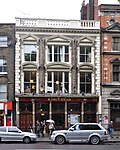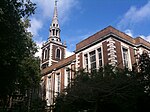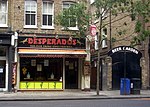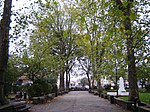Angel Recording Studios

Angel Recording Studios Limited (also referred to as Angel Studios) was a British recording studio based in the eponymous recording and mixing complex in Islington, London. The company was incorporated by James Warren Sylvester de Wolfe on 5 December 1978. After ownership of the property transferred to third parties, the facility was closed at the end of 2019. The building was originally constructed as a Congregational chapel in 1888, and is now Grade II listed. The premises were acquired by library music specialists De Wolfe Music in the late 1970s and opened in 1982. Since then, the studio has been used to record both commercially successful work such as Adele's 2011 album 21 and numerous classical recordings
Excerpt from the Wikipedia article Angel Recording Studios (License: CC BY-SA 3.0, Authors, Images).Angel Recording Studios
Gaskin Street, London Highbury (London Borough of Islington)
Geographical coordinates (GPS) Address Nearby Places Show on map
Geographical coordinates (GPS)
| Latitude | Longitude |
|---|---|
| N 51.5378 ° | E -0.1024 ° |
Address
Thomson Currie
Gaskin Street
N1 2RX London, Highbury (London Borough of Islington)
England, United Kingdom
Open on Google Maps











